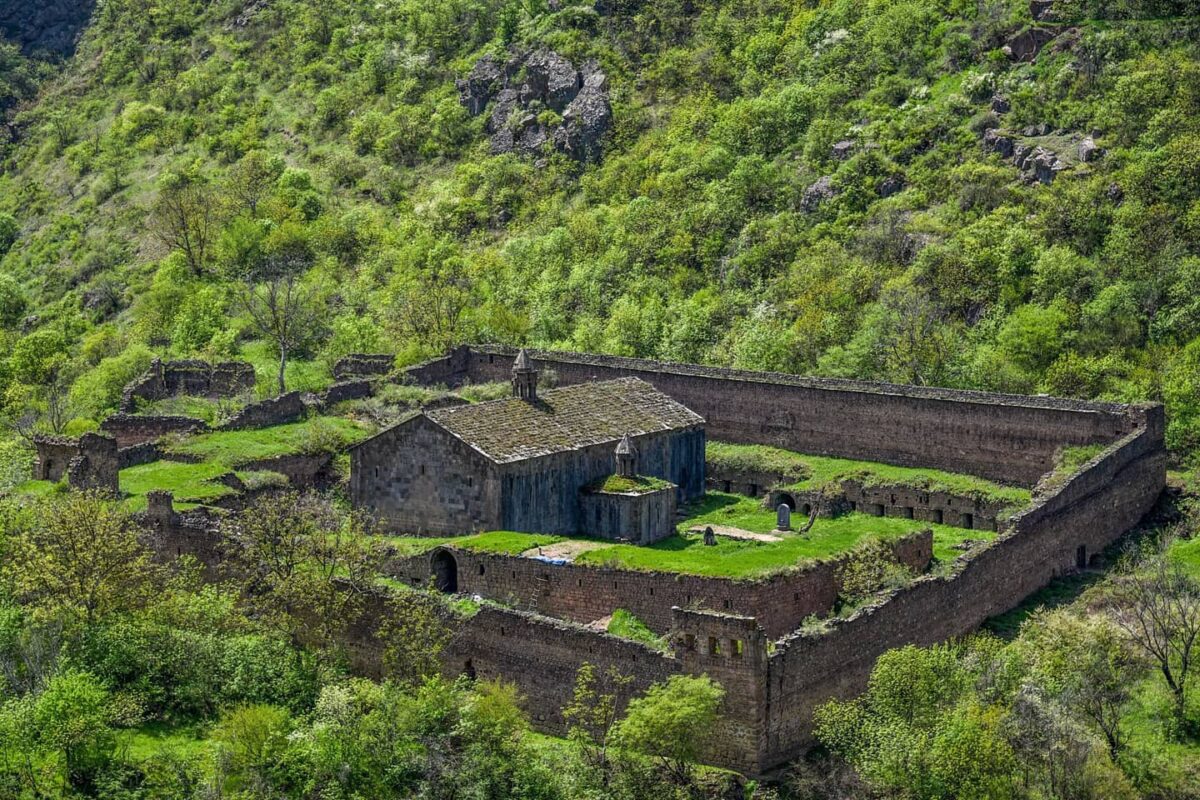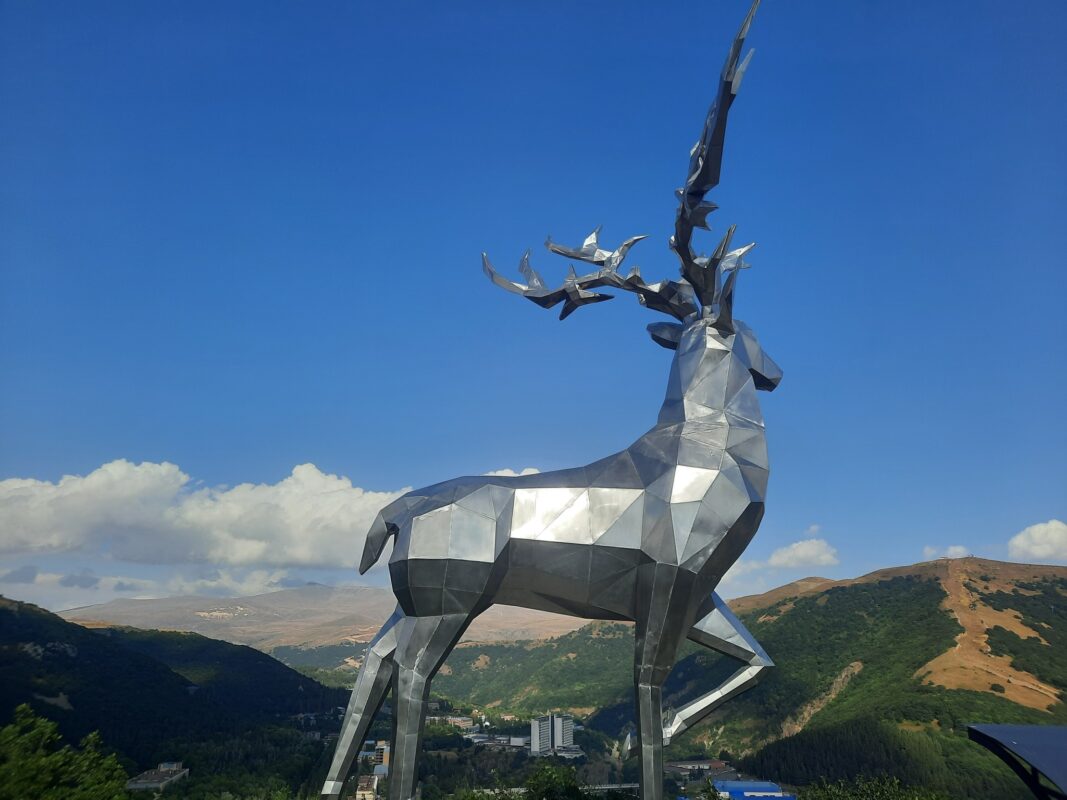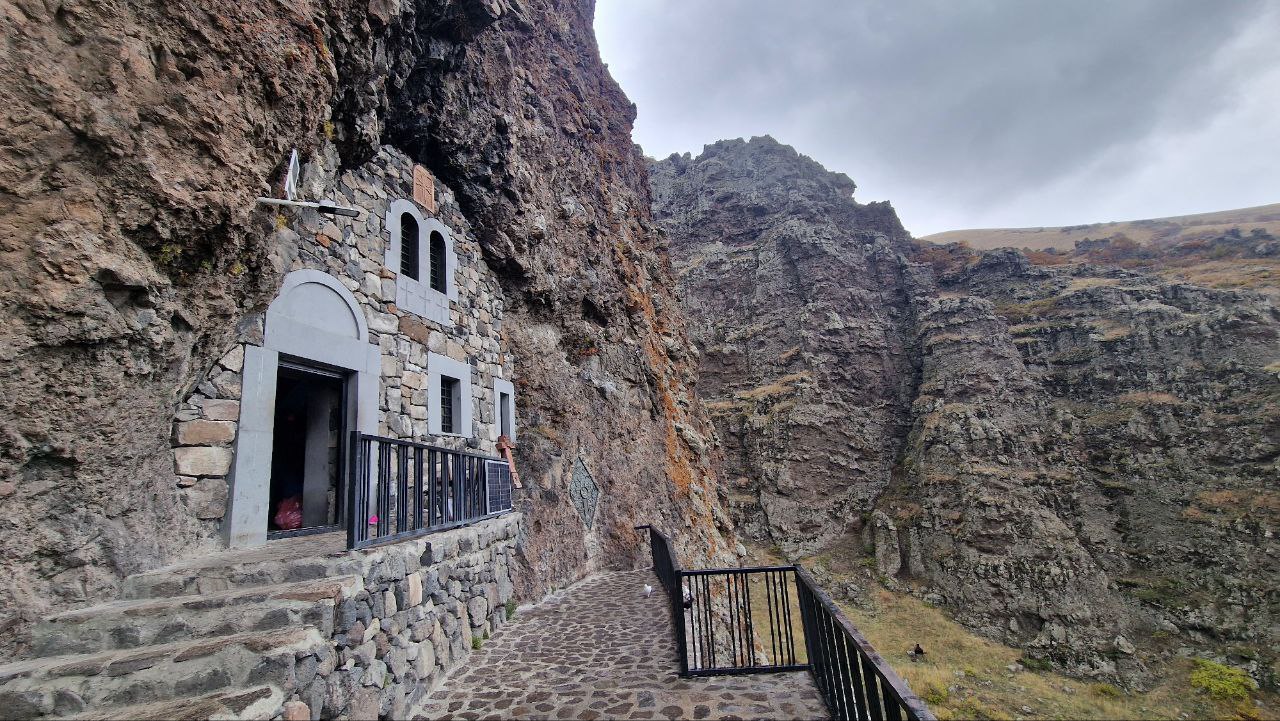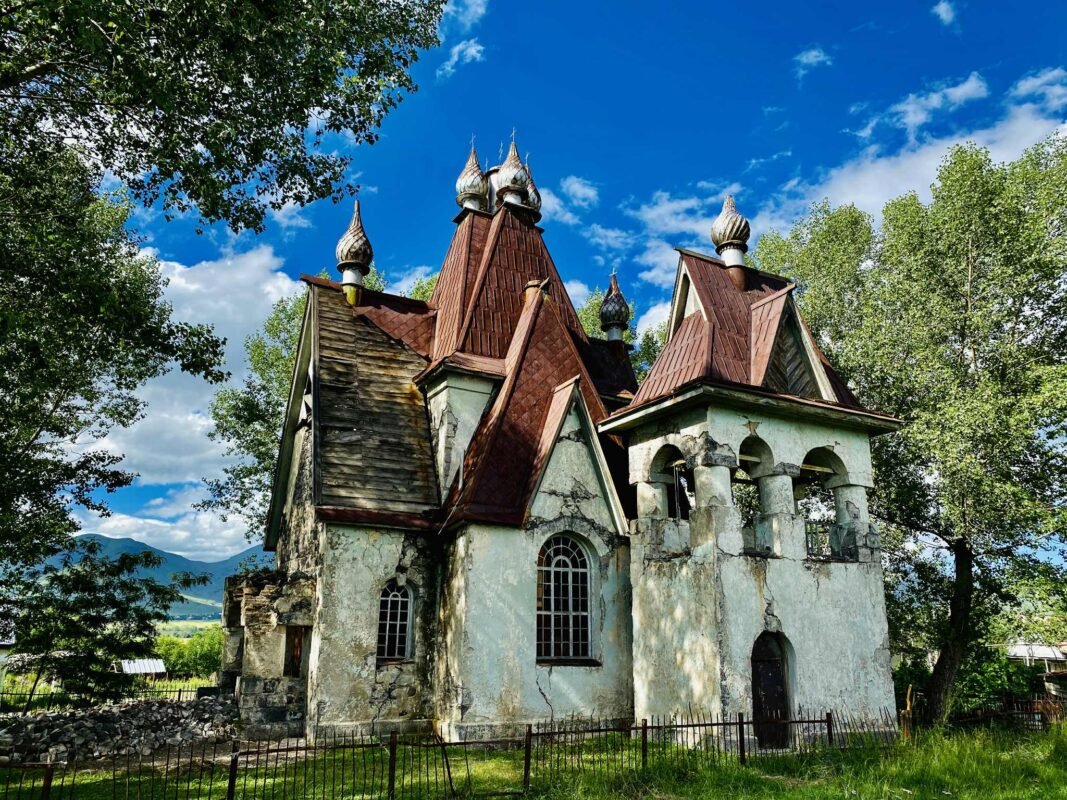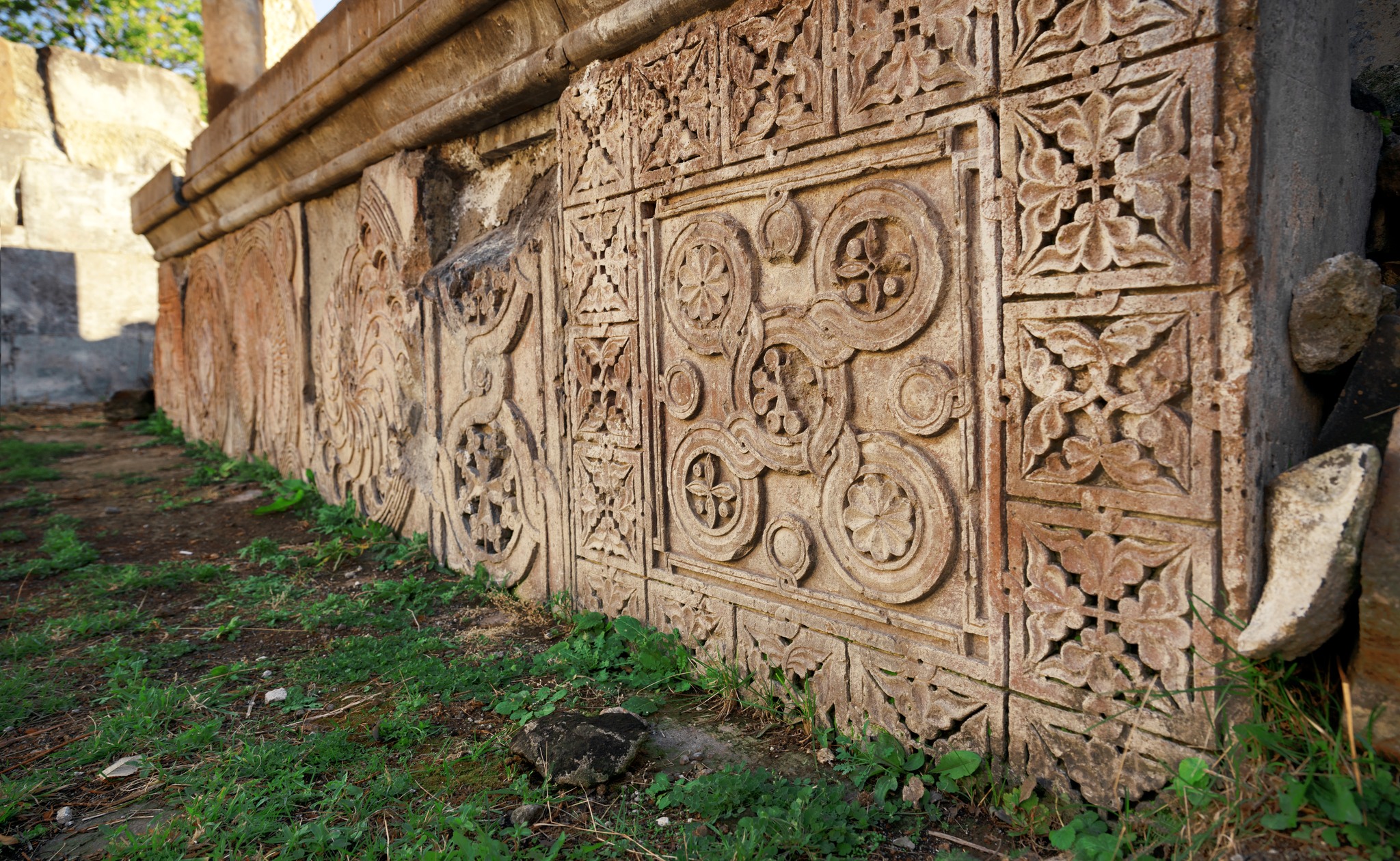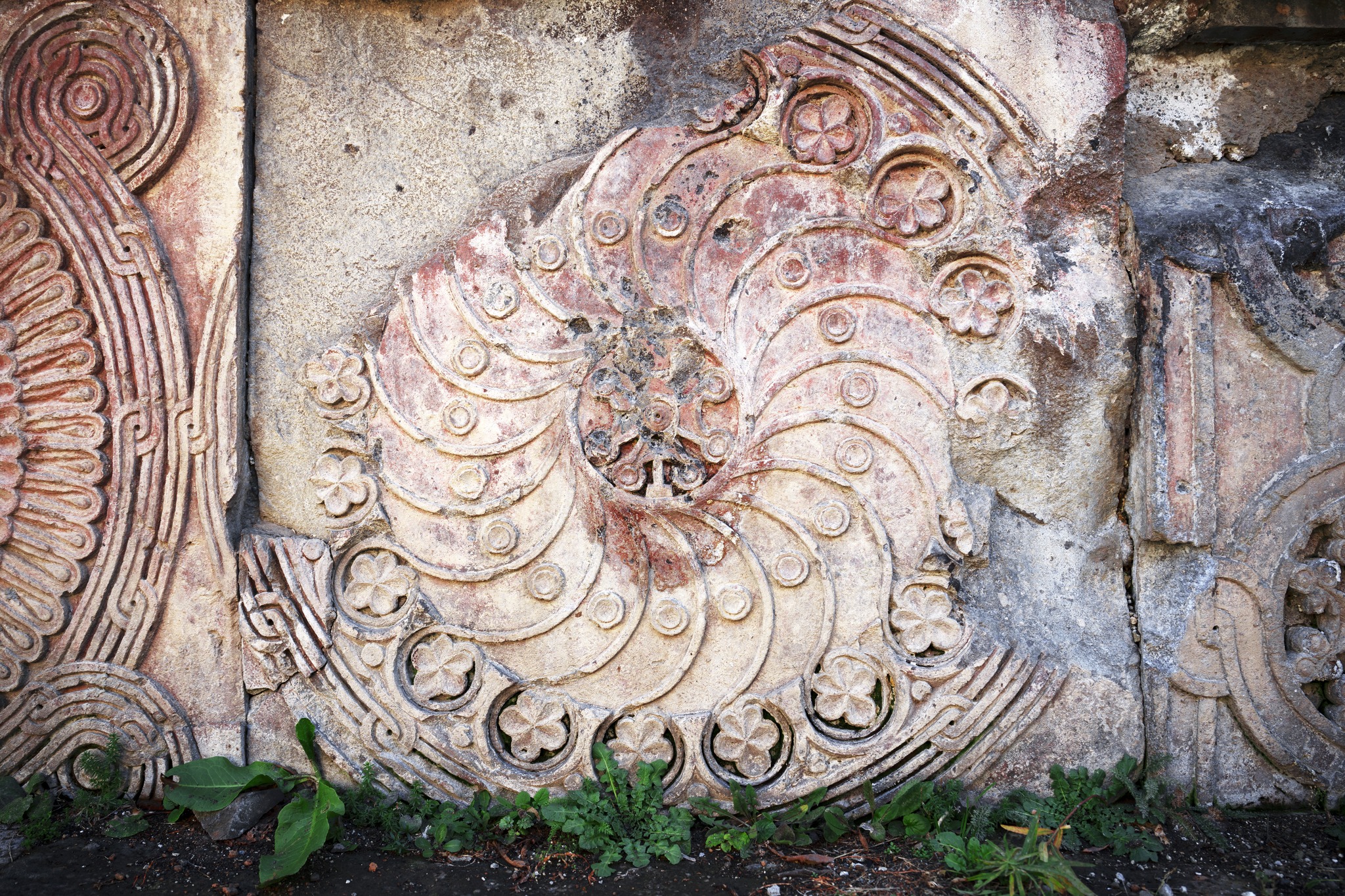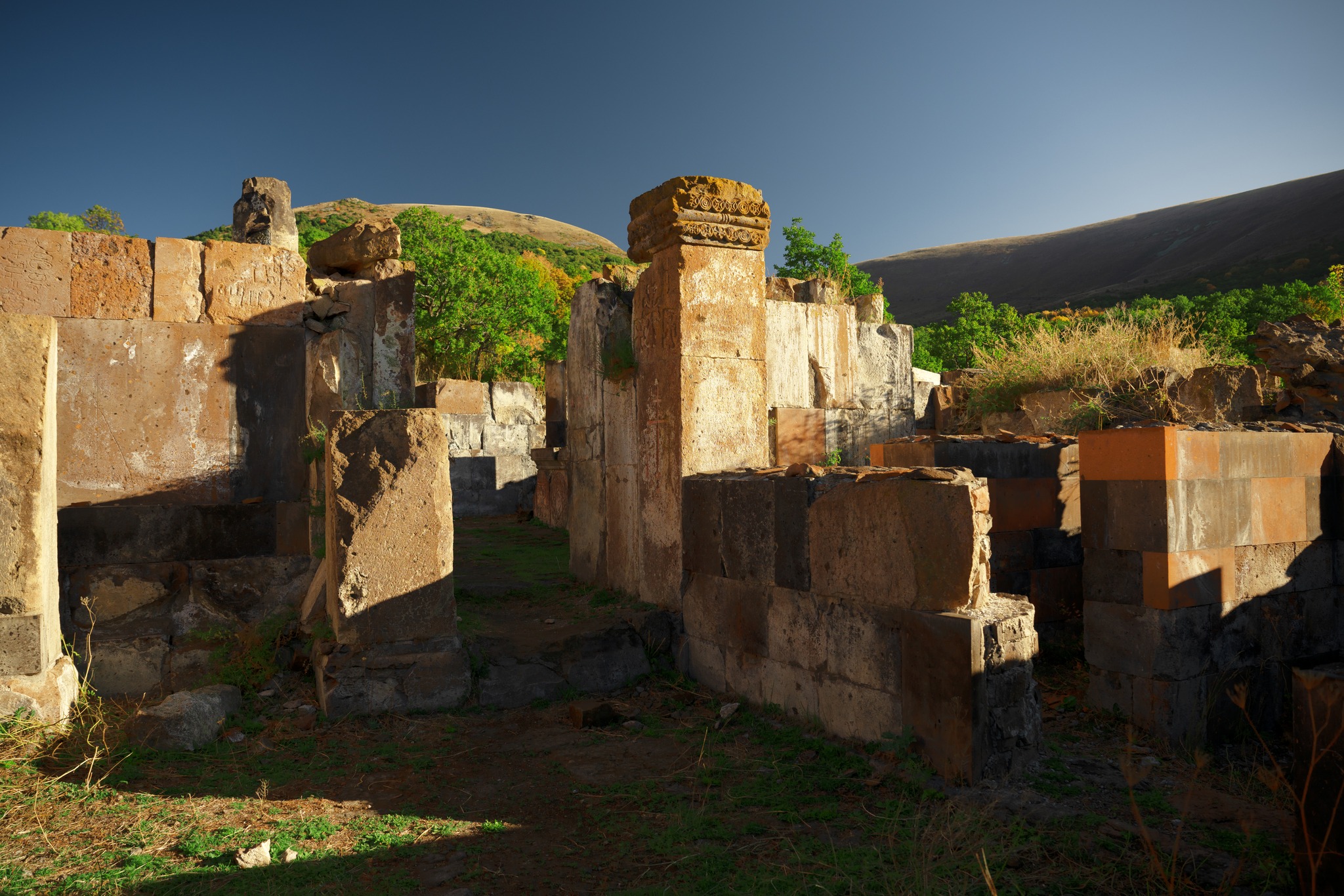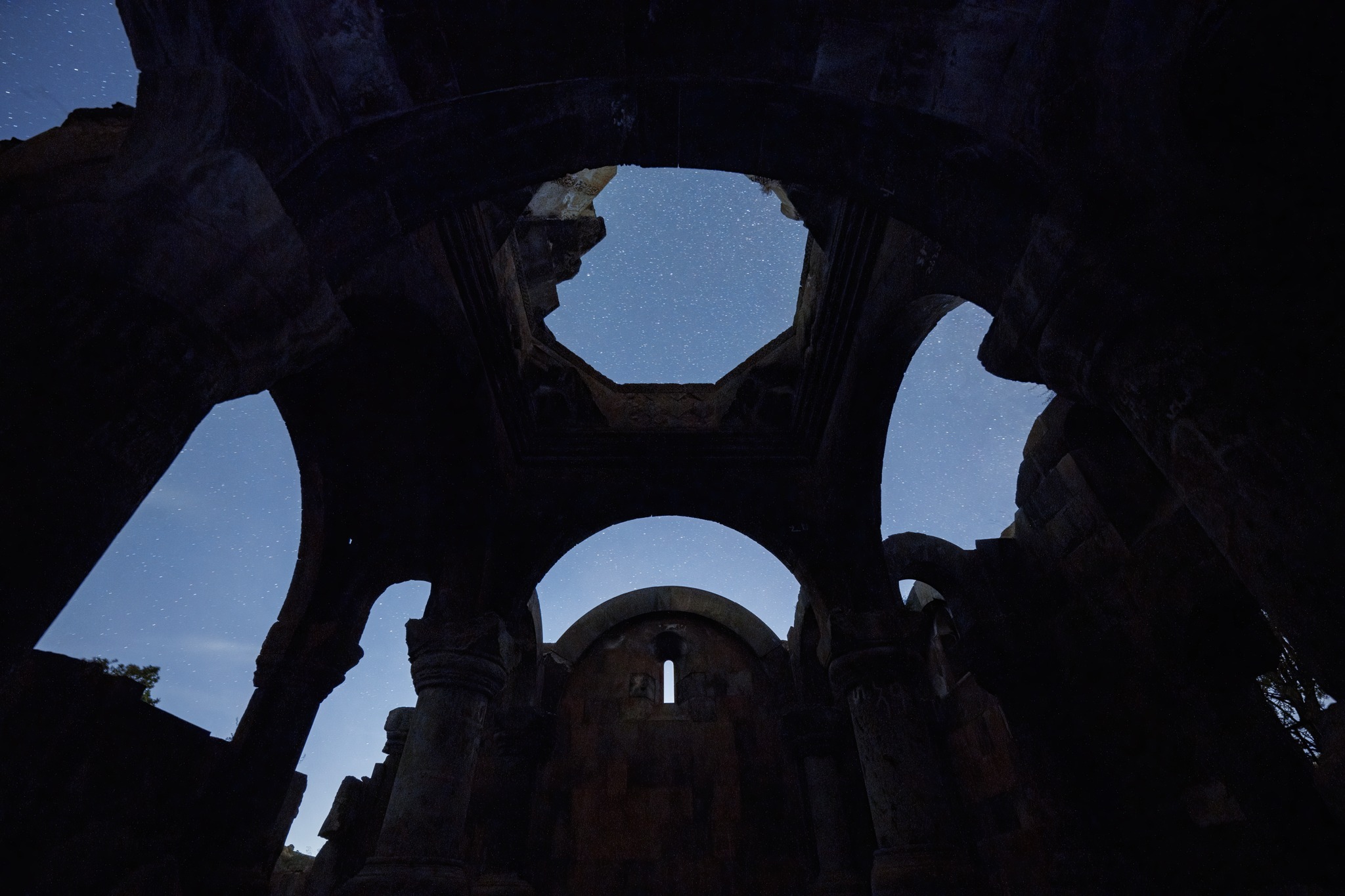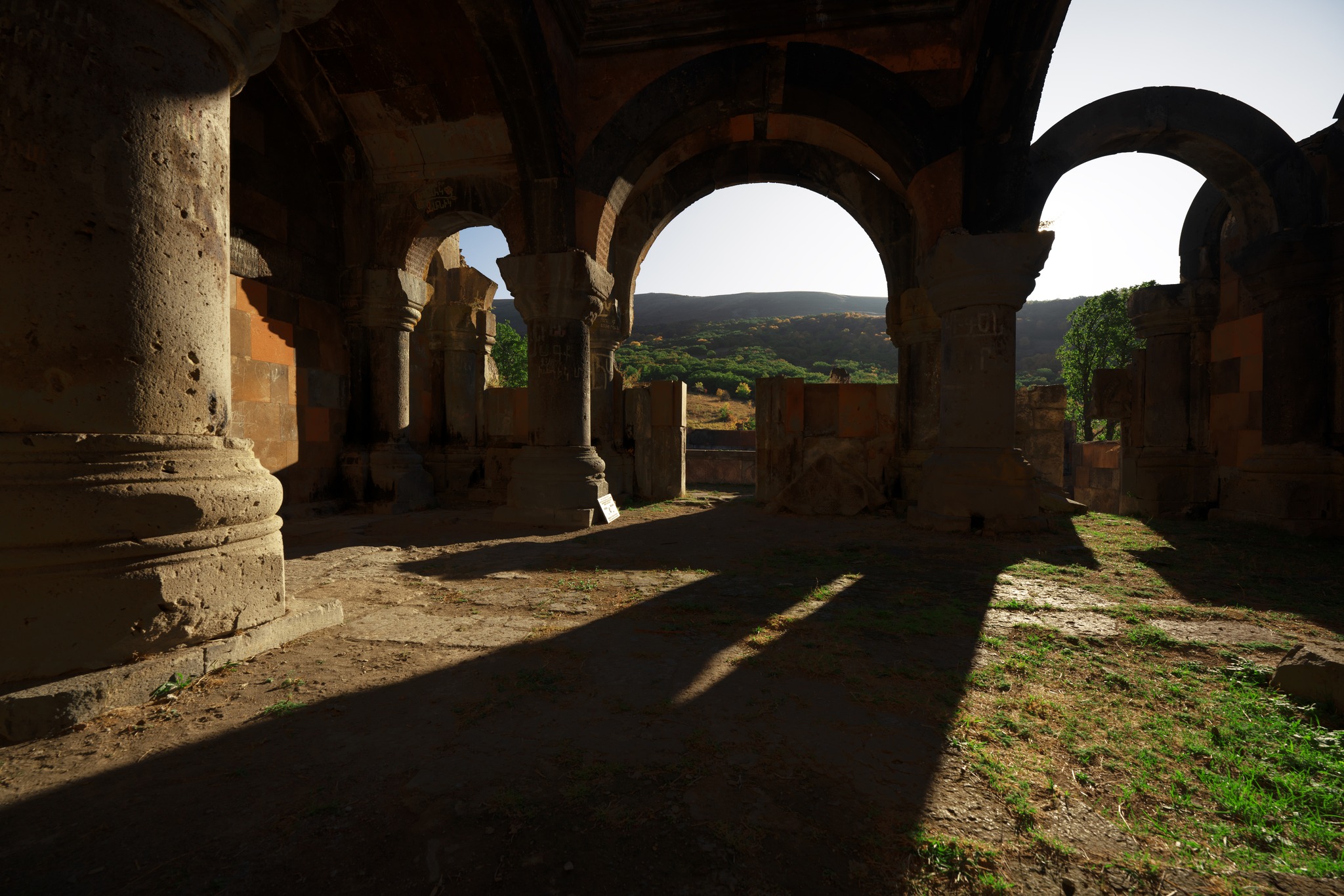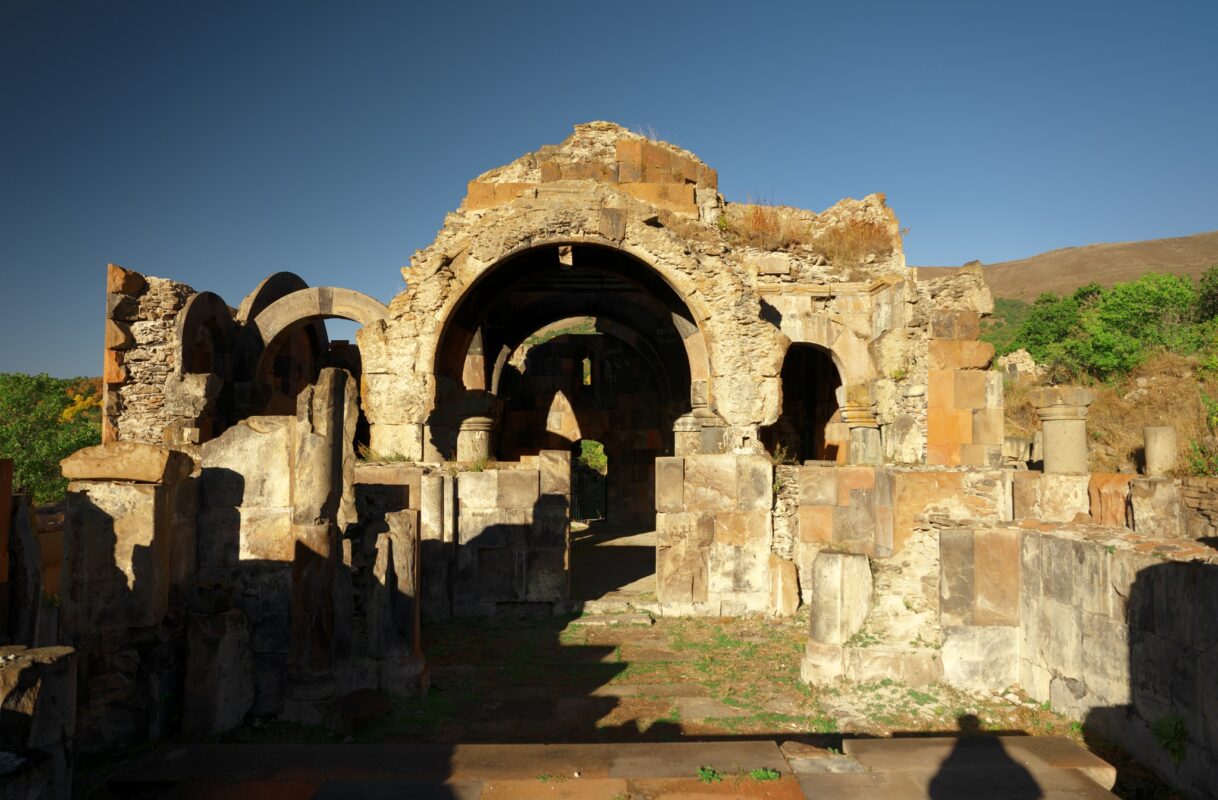Latest Listings
Related Listings
Close To You
Teghenyats Monastery
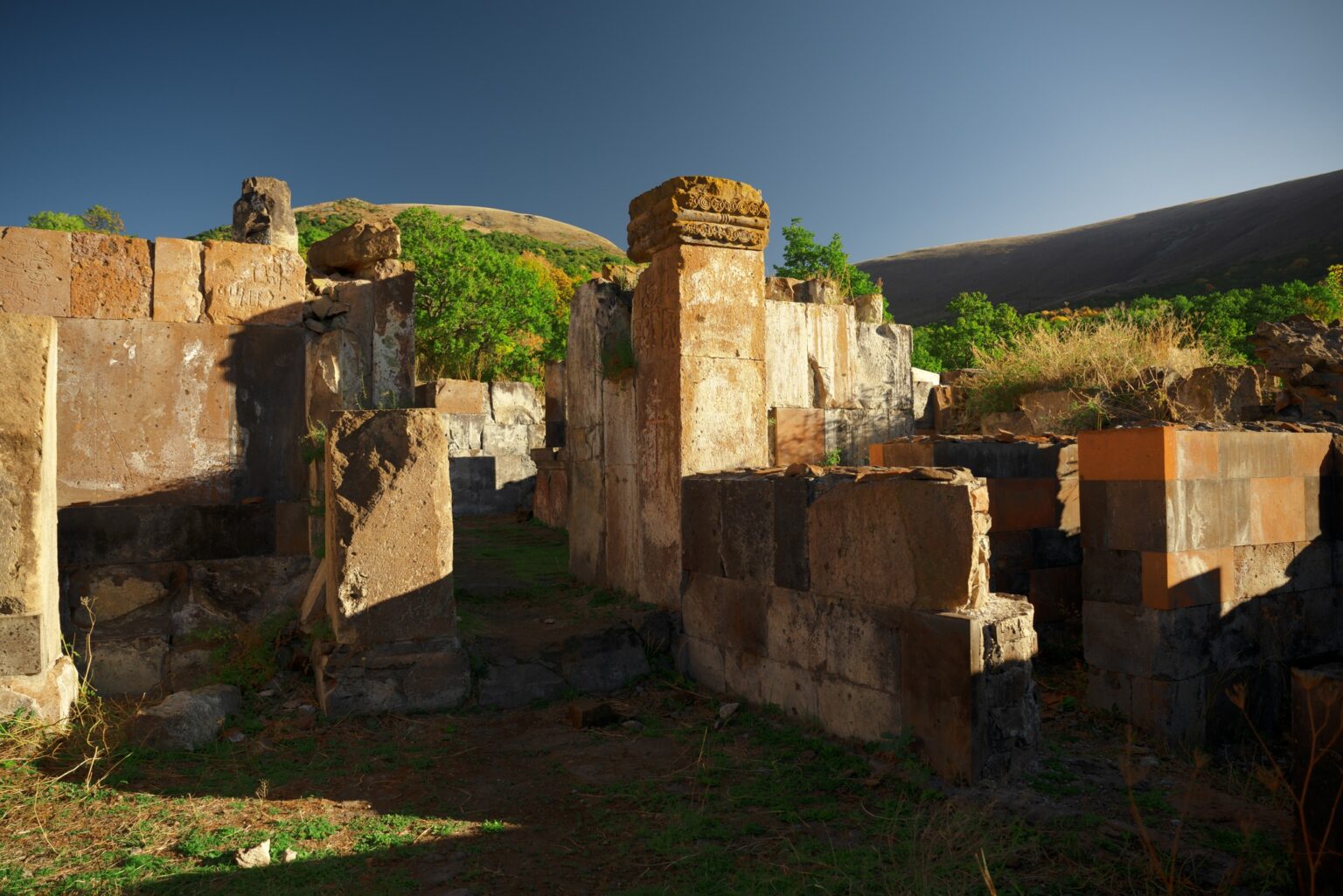
Monastery
1900 m
Historical
Medium
📍 Location - Kotayk Province, 3 km north of Bujakan village, on the forested slope of Mount Teghenis, surrounded by beech trees.
🕰️ Period - The earliest structures of the monastery date back to the 6th-7th centuries, while the main buildings were constructed during the 11th-13th centuries.
🌐 Coordinates - 40.5306° N, 44.6001° E
🌿 Best Time to Visit - From late spring to late autumn (May-October), when the forest is lush and the road is easily accessible.
🛤️ How to Get There - From Bujakan village, one can either hike or drive with an off-road vehicle northward through forest paths for about 3 km to reach the clearing where the monastery stands.
OVERVIEW
Teghenyats Monastery was one of medieval Armenia’s prominent spiritual and educational centers, founded between the 6th and 13th centuries. It lies near the village of Bujakan in Kotayk Province, nestled among the wooded slopes of Mount Teghenis. The monastery was renowned for its strict religious discipline and flourishing tradition of manuscript creation. Many distinguished scholars and clerics worked here, and their manuscripts are now preserved in the Matenadaran Institute of Ancient Manuscripts in Yerevan and in the British Museum. The main church (Katoghike), the gavit halls, and the scriptorium stand out for their refined architecture and intricate carvings. The monastic liturgical order of Teghenyats later became the foundation for the unified ecclesiastical rule system compiled by Catholicos Nerses the Gracious, turning Teghenyats into a lasting symbol of Armenia’s spiritual and cultural heritage.
NAME ORIGIN
The name “Teghenyats” derives from the Armenian word “teghi” (beech tree). The monastery was built on a slope of Mount Teghenis surrounded by dense beech forests, which gave rise to its name meaning “the place of the beeches.”
HISTORY
The first recorded mention of Teghenyats Monastery dates back to the early 8th century (727-728 AD), when Armenian prince Vahan of Goghtn sought refuge here while fleeing Arab persecution. The site already served as both a sanctuary and a place of worship at that time. The oldest known structure is the small 6th - 7th century Church of the Holy Mother of God, whose foundations were revealed during archaeological excavations. Teghenyats flourished between the 11th and 14th centuries, when its main buildings were constructed - the Katoghike Church, two gavits (narthexes), a scriptorium, and a refectory. The monastery was patronized by the Vachutyan princely family, who contributed greatly to its construction and prosperity. In 1207, Prince Vahram Chavush built a gavit adjoining the Katoghike - a four-columned, pyramid-roofed hall notable for its artistic combination of red and black tuff stone. Beyond its religious role, Teghenyats became a major literary and educational center. Its scriptorium produced numerous manuscripts, some of which are now housed in the Matenadaran in Yerevan and the British Museum in London. Among the most celebrated scribes were Tadeos, Vardan, Gevorg Skevratsi, Sargis the Deacon, and Priest Nahapet. The monastery also played a crucial role in shaping the Armenian Church’s liturgical discipline. In the late 12th century, Catholicos Nerses the Gracious (Nerses Shnorhali) used the prayer and service orders of Teghenyats and Makhenyats monasteries as the foundation for creating a unified system of liturgical practice that would guide Armenian churches for centuries.Among Teghenyats’s notable abbots were Jeremiah the Hermit, Vardapet Turkik, Vardapet Mkhitar, Vardapet Grigor of Bjni, and Vardapet Hakob.
In the 13th century, the monastery’s reputation reached its height - contemporaries described it as “the famous, angelic, and God-inhabited holy monastery.” It hosted theological councils, manuscript copying activities, and scholarly discussions. By the mid-14th century, the monastery began to decline, weakened by Mongol invasions and political instability. In 1827, a devastating earthquake caused heavy destruction. Archaeological excavations led by Gagik Sargsyan in 1979 uncovered the buried structures, including the Katoghike Church, gavit, and scriptorium. Later, between 2010 and 2015, conservation and partial restoration works were carried out, making the site once again accessible to visitors.
ARCHITECTURE
Teghenyats Monastery is a multi-layered medieval complex that includes the Katoghike Church (the main church of the monastery), its adjoining gavit (narthex), a second northern gavit, a scriptorium (which also served as a school and study hall), a refectory, as well as adjacent residential and utility structures, small chapels, and two cemeteries - one to the west of the main ensemble and another deep within the surrounding forest. The complex also features the remains of a small 6th-7th-century cruciform Church of the Holy Mother of God, located about 30 meters east of the Katoghike.
Katoghike Church - The Katoghike is a domed hall structure with two pairs of wall piers supporting its central dome. On both sides of the main altar are sacristies, and the principal entrance opens into the gavit. The altar platform is adorned with six intricately carved slabs featuring geometric, floral, and animal motifs of exceptional craftsmanship. The central slab is especially remarkable - it depicts a peacock with its tail fully spread, wings half-open, and head gracefully turned to the right. The peacock, symbolizing immortality, is a common motif in Armenian manuscript art but is extremely rare in sculpture. The church façades are enriched with recessed Armenian-style niches that soften the solid stone surfaces, creating rhythm and an interplay of light and shadow.
Gavit (Assembly Hall) - The gavit, adjoining the Katoghike from the west, is a four-column, centrally planned hall built in 1207 under the patronage of Prince Vahram Chavush. The interior is vaulted, with the central square once crowned by a domed lantern that provided both light and ventilation. Inside, the color contrast is striking - alternating red and black tuff stones form a checkerboard pattern across the upper walls and arches. The octagonal drum’s corners are decorated with chain-like stone carvings, and its base is encircled by finely sculpted braided bands. The western portal features a rectangular frame with radiating tuff stones on the lintel, giving the entrance a sense of grandeur and movement. The gavit served as a meeting hall for theological discussions and, at times, as a burial place for local nobility.
“Second Gavit” - Excavations on the north side of the main gavit revealed another large, four-column vaulted hall of similar design. Often called the “second gavit,” it is thought to have functioned as a school or library hall, as Teghenyats was an important educational center. In later periods, it was repurposed for practical, economic use. East of this building, archaeologists uncovered a large residential-economic room with a fireplace, suggesting seasonal or winter habitation within the monastic compound.
Scriptorium (Study House) - Attached to the south of the Katoghike Church, the scriptorium is a rectangular, barrel-vaulted hall without columns. Its eastern side is divided into four small chambers believed to have been used by scribes as writing rooms, while the southwest corner holds a separate enclosed space, possibly a storage room. The main entrance, located on the southern façade, is emphasized by a richly carved portal - a rare sign of importance for a non-liturgical structure, underlining the high status of intellectual life in the monastery. The scriptorium connects directly to the Katoghike through an interior passage and also to the gavit, illustrating the integrated nature of spiritual, educational, and communal life within the complex.
Refectory - The monastery’s refectory, situated in the northwestern section, is an elongated rectangular, barrel-vaulted hall. It is built using mixed masonry: finely cut basalt for the structural elements (corners, pillars, arches) and roughly hewn small and medium stones for the walls. This technique provided strength while economizing on finely worked stone. The refectory had at least two entrances - from the southeast and northeast. Excavations to the south uncovered adjoining service rooms containing everyday pottery, glassware, and metal artifacts, revealing the disciplined, communal nature of life in the monastery centered around shared meals.
Small 7th-Century Church - About 30 meters east of the main group lies the oldest preserved structure: a small cruciform, three-apsed, domed Church of the Holy Mother of God, dating to the 6th–7th centuries. Although only the foundations remain, the floor plan reflects the cross-in-square design typical of early Christian Armenian architecture. The existence of this early shrine proves that the site was already a pilgrimage destination before the larger 11th–13th-century buildings were constructed.
Cemeteries and Tombstones - To the west of the main ensemble lies the monastery’s primary cemetery, while a second, larger burial ground with animal-shaped tombstones is located about 200 meters north, within the forest. The inscriptions on the tombstones mention both clerics and laypersons, including notable monks and a certain layman named Patrik, whose epitaph implores prayers for him as “a sinful servant of Christ.” These cemeteries provide valuable insight into the monastery’s social history, indicating that Teghenyats served not only its monastic community but also pilgrims and faithful from surrounding regions.
LOCAL LEGENDS
Teghenyats Monastery is surrounded by captivating legends that have been passed down through generations in Bujakan and nearby villages.
The Legend of the Beech Shadow - According to local lore, it was not people but nature itself that chose the monastery’s location. Seeking a secluded place to build their sanctuary, the monks let the wind, guided by divine will, blow a small beech twig from their hands. The twig landed in a sunlit clearing surrounded by beeches - and there, they built the monastery.
The Tears of the Holy Mother Spring - Near the monastery flows a small spring known as “The Tears of the Holy Mother.” Locals believe that when the monastery was destroyed by an earthquake, the spring dried up because “the Holy Mother wept for her lost temple.” When people later returned to pray, the waters miraculously began to flow again.
The Miracle of the Written Gospel - One tale tells of a weary scribe who, unable to finish copying the Gospel, prayed for divine help and left his work unfinished for the night. In the morning, he found the final page completed in perfect handwriting. From that day on, the monks believed that any scribe who worked with a pure heart was guided by the Holy Spirit.
Facilities
Nearby
Dating back to the 10th-11th centuries, this fortress was built by the Pahlavuni princely family and served as their main residence. At the foot of the fortress stand Bjni’s medieval churches – St. Astvatsatsin and St. Sargis – while from the summit, visitors are treated to breathtaking views over the Hrazdan Gorge.
A small monastery believed to have been a subsidiary spiritual site connected with Teghenyats. Built in the 10th-11th centuries, it is known for its stone khachkars (cross-stones) and natural cave chapels. Nestled amid forests and mountain streams, Neghuts Monastery offers a serene and secluded atmosphere ideal for meditation and reflection.
Dating to the 12th-13th centuries, this modest monastery once functioned as a small hermitage within the same spiritual network as Teghenyats. Its ruins, hidden in a forested area, still attract locals who call it “The House of God,” believing that miraculous healings have taken place there.
A modern mountain resort located in the Aghveran recreation zone, about 9 km south of Teghenyats. The resort is known for its pure alpine air, forest surroundings, and high-quality hospitality infrastructure, making it a comfortable stop for rest or overnight stays after exploring the monastery.
A rare natural formation featuring multicolored sand and soil layers stretching across the slopes of Mount Gutanassar. These vividly toned deposits, shaped over millennia by volcanic erosion and wind, create a visually stunning landscape. The area is ideal for eco-tours, photography, and hiking, especially at sunrise or sunset, when the colors shift from golden to pink and violet hues.

